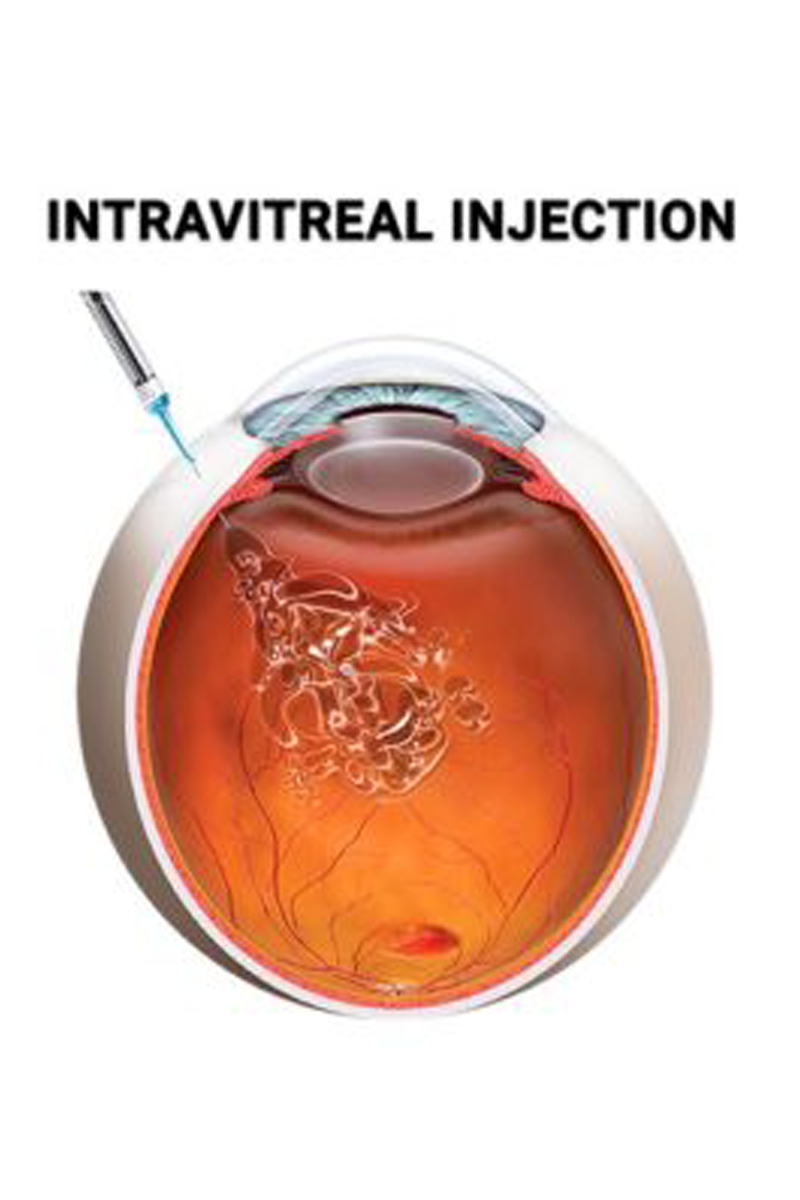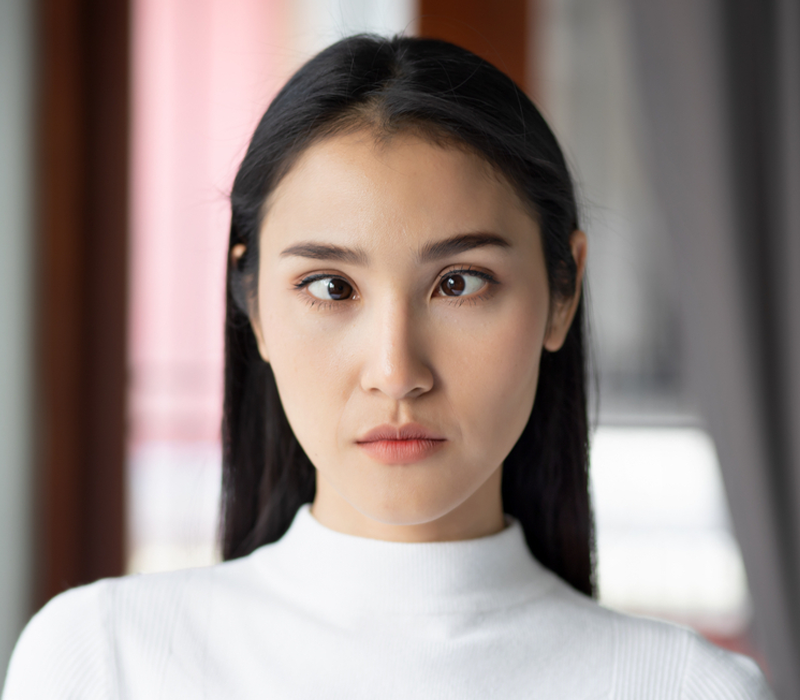
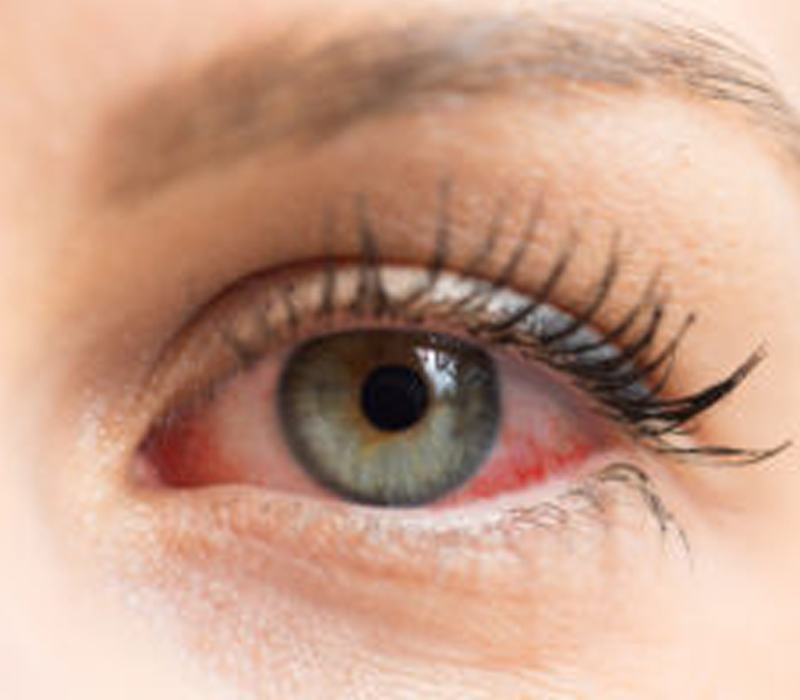
Other &cosmetic
Dry Eye/Blepharitis occurs most often when the meibomian glands on the eyelids become inflamed or clogged (meibomian gland dysfunction, or MGD).
Dry eye
treatment
Meibomian glands produce the lipid, or oil, that stabilize the tear film and prevent it from immediately evaporating. When the lipid layer is not present, tears will evaporate too quickly. Dry eye/Blepharitis can also develop when the eyelids do not close properly or when the lacrimal glands of the eye fail to produce enough lubricating tears.
Patients at risk include women experiencing age-related hormonal changes, those eating a diet that is low on vitamin A or low in omega-3 fatty acids, individuals with certain allergies, on medication for allergies, or being on other drugs where the dry eye/Blepharitis may be a side effect, like birth control pills or antidepressants. The prevalence of dry eye also increases with age, more than 25 million people in the U.S. suffer from dry eye.
Symptoms of Dry eye/Blepharitis can range from mild to severe and include eye discomfort or irritation, grittiness, the feeling of a foreign body in the eye, a burning or stinging sensation, continuous tearing, redness, discharge, itchiness, sensitivity to light,
difficulty reading, or being on a computer, inability to wear contact lenses or a constant need for lubricating eye drops.
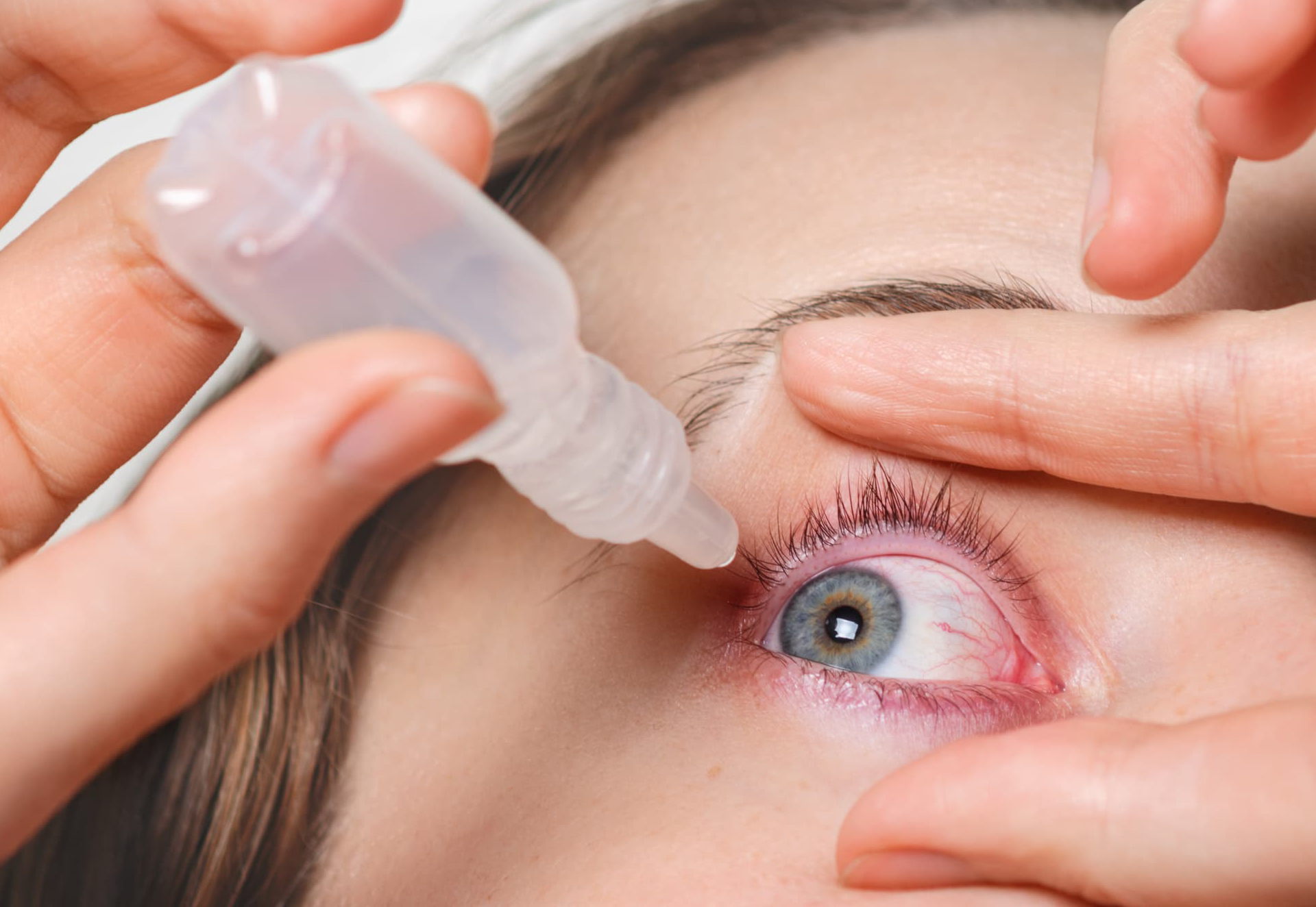
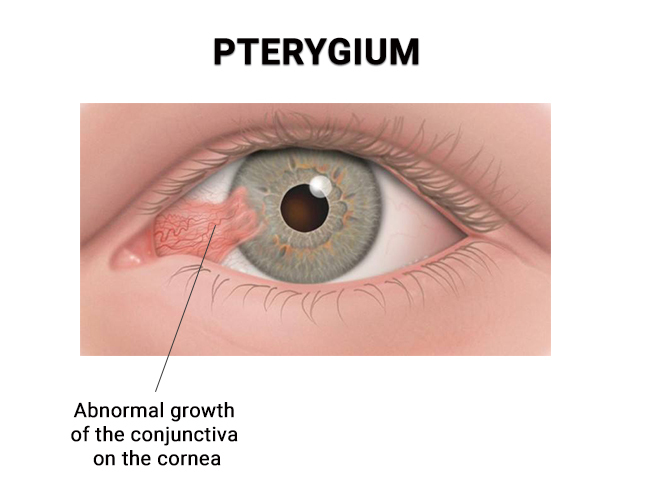
Pterygium
Pterygium (pronounced TRY-jee-um) is a non-cancerous growth on the conjunctiva that lines the inside of your eyelid to protect it from harmful microbes. The conjunctiva also lubricates your eyes by producing tears and mucus. A pterygium is a triangular-shaped tissue growth that extends to your cornea. In most cases, it appears raised with visible blood vessels. The growth, also known as surfer’s eye, can occur on either side of your eye.
A pterygium mostly grows from the inner corner of the eye near your nose. It usually remains small, but sometimes it grows to cover your pupil, restricting your vision. If untreated, a pterygium may grow across your cornea, causing vision problems that may require pterygium surgery to correct. When the growth causes eye discomfort, it requires immediate attention surgery may be indicated..
WHAT CAUSES SURFER’S
EYE?
The exact cause of pterygium is unknown, but identified conditions are associated with the development of a surfer’s eye :
Long-term exposure to UV light. People who live near the equator are at a higher risk of developing a surfer’s eye. The long hours of sunlight in these regions increase the risk of exposure to ultraviolet radiation (UV) light. We,identify UV light as one cause of this fleshy eye growth.
Exposure to sand and dust. Long-term exposure to dust increases the risk of Sand and dust are irritants that can inhibit your conjunctiva’s ability to lubricate your eye. People exposed to such irritants on a regular basis are more vulnerable to pterygium.
Other irritants. Exposure to wind, smoke and pollen can also increase the risk of getting this non-cancerous eye growth.
HOW IS
PTERYGIUM TREATED?
The size of the growth influences the treatment your eye doctor chooses. Pterygium treatments include:
A special contact lens. We can prescribe special contact lenses placed over your eye to protect against environmental irritants and UV light.
Medications. We can opt for conservative treatment of a surfer’s eye through medications. For mild cases of surfer’s eye, over-the-counter tear drops may be enough to deal with redness and swelling. Other medications include topical corticosteroid anti-inflammatories and non-preserved ointments.
Pterygium excision surgery.The procedure is performed to remove the pterygium under topical anesthesia .
It helps to improve your vision and stops eye discomfort. Surgical options include conjunctival autograft technique which is considered the perfect technique to stop recurrence .
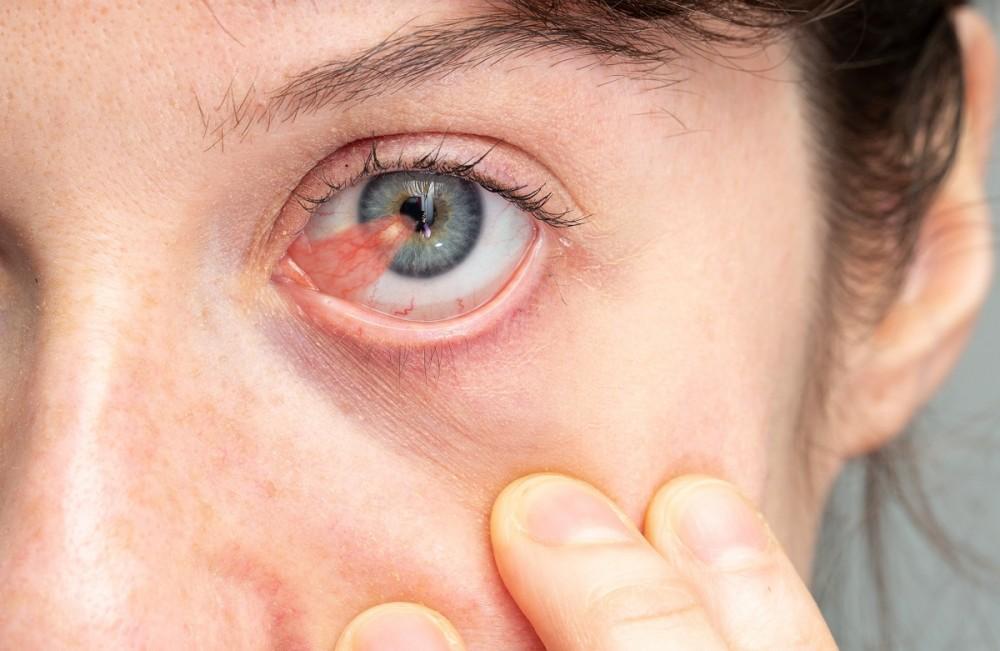
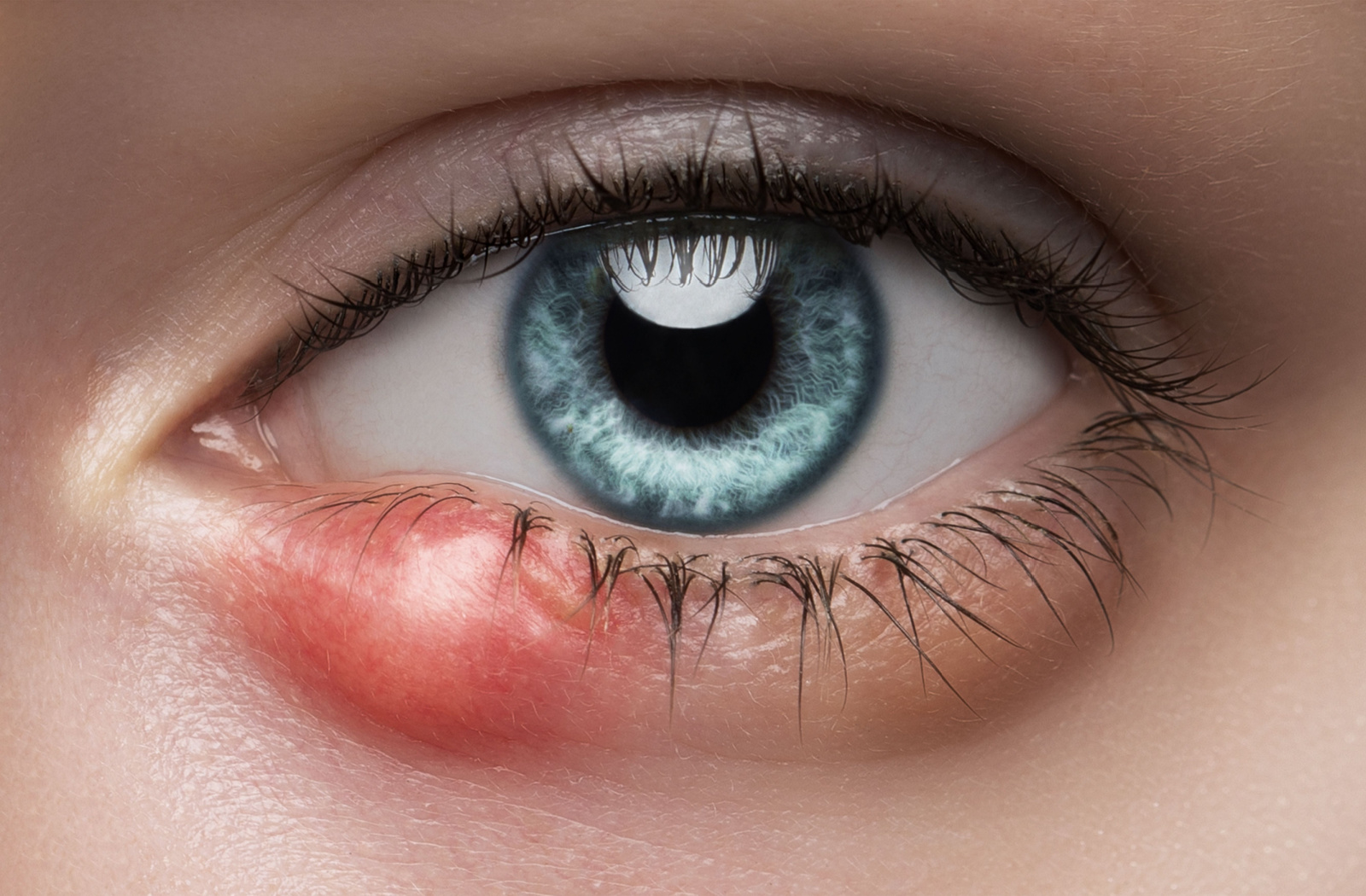
WHAT IS A
CHALAZION?
Your eyelids have small oil glands, called meibomian glands, just below the base of your eyelashes. These glands generate an oily substance to lubricate your eyes. But when those glands get clogged, they become inflamed and eventually form a growth that’s referred to as a chalazion. It’s also known as a meibomian cyst.
DO HOME TREATMENTS FOR
CHALAZION WORK?
Warm towel compress. Apply a warm towel to the chalazion on your eye for 10 to 15 minutes, four to six times per day for several days. The heat and compression from the wet towel loosen the oil that has clogged up the ducts in your eye glands, getting it to drain and eventually heal. Use a soft, clean cloth and moisten it frequently in warm water for the best results.
Combination treatment. Combine the warm compress with a gentle massage to the external portion of your eyelid for several minutes. This improves your circulation and promotes drainage.
Over-the-counter treatments. Try a sterile lubricant eye ointment or an eye-irrigating solution like an eye wash. Medicated pads keep your eye area clean, as well.
Common sense. Once your chalazion has drained and cleared up, keep the area around your eye clean. Avoid touching your eyes with your hands, too. If you’ve had one chalazion, you’re at risk to get another.

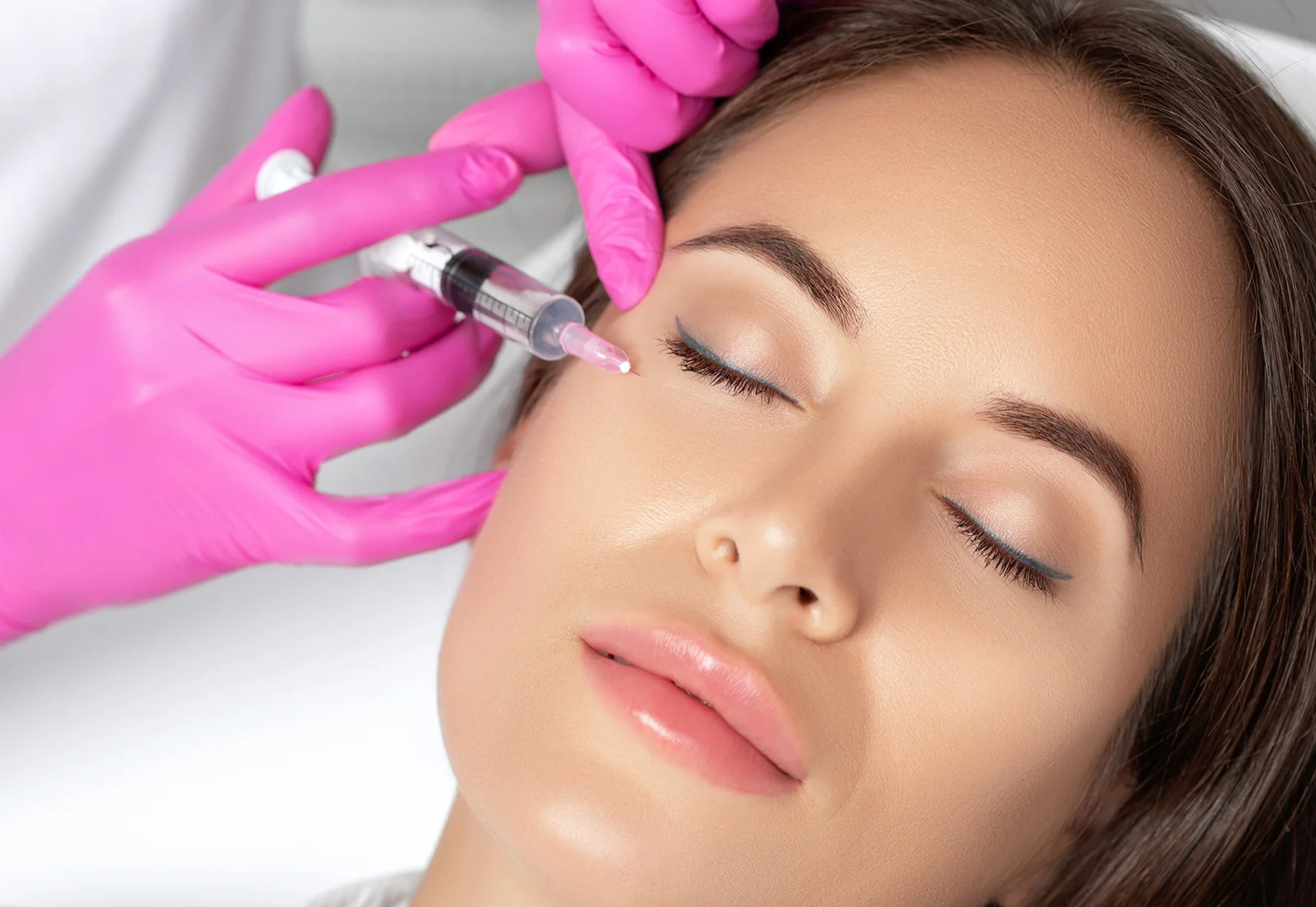
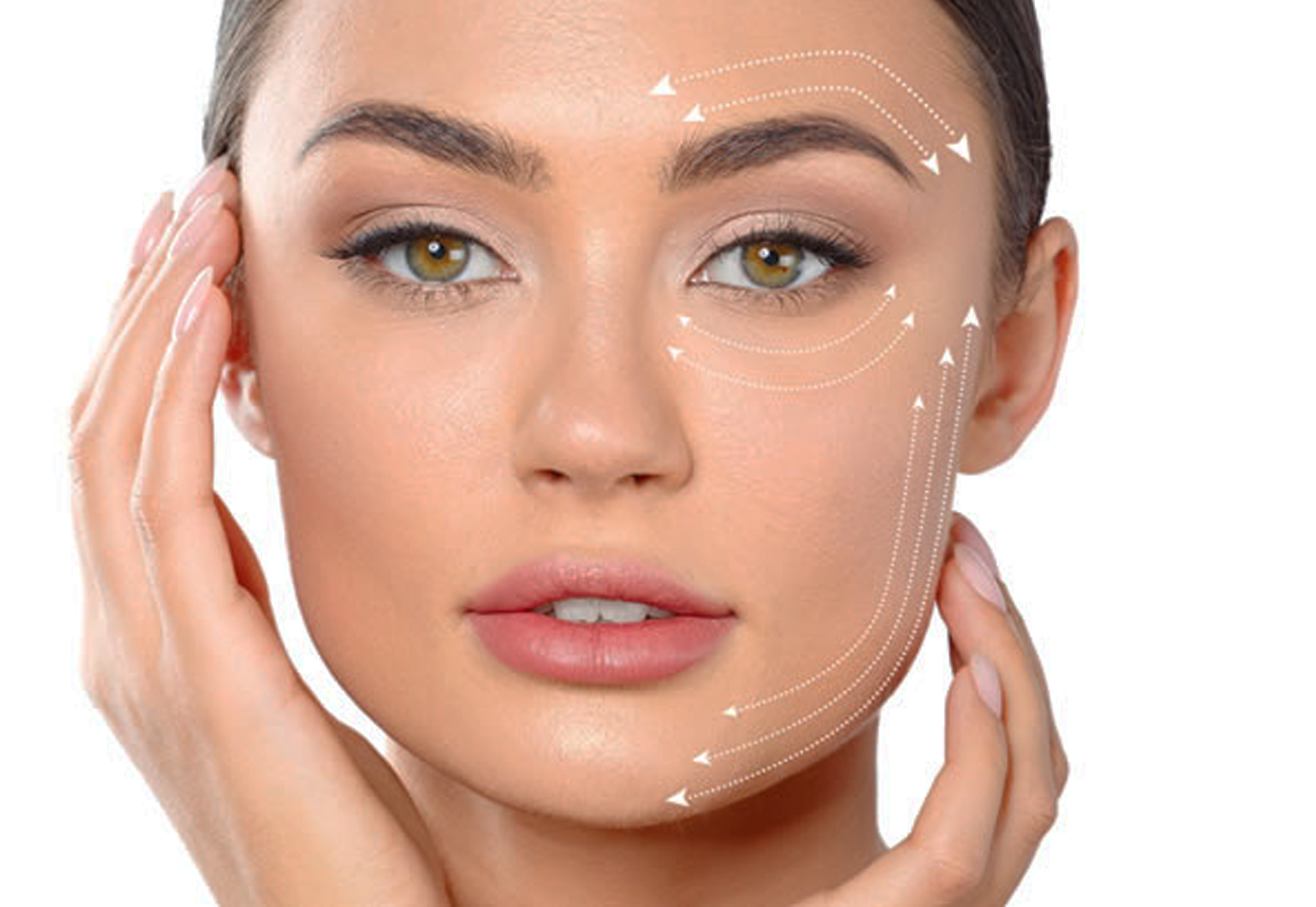
Wrinkle Correction
/ Facial Fillers
As both a surgeon and injector, Dr. Omar knows the brow and eyelid anatomy inside and out. This allows him to strategically place Botox and fillers exactly where they will have the most effect and will look completely natural.
Neurotoxins
(Botox, Xeomin, Dysport, and Jeuveau)
In addition to traditional skin care, Botox is a powerful tool in the battle against facial wrinkles. When facial muscles contract, the overlying skin responds with a wrinkle. This
An Anatomic Guide
to Facial Fillers
Understanding that patients are often best treated using a combination of different fillers and neurotoxins in order to achieve the best result. Dr. Omar evaluates each patient’s anatomy, needs and concerns in order to determine the areas to treat and fillers to utilize.
Glabella: Juvederm Ultra, Restylane, Belotero
Temple: Juvederm Voluma
Tear trough: Restylane, Belotero
Cheekbones: Juvederm Voluma, Radiesse, Restylane Lyft
Nasolabial folds: all fillers
Lips: Juvederm Ultra, Restylane, Restylane Silk, Volbella
Smokers lines: Juvederm Ultra, Restylane Silk, Volbella
Marionette lines and oral commissure: all fillers
Lower cheek: Juvederm Ultra and Ultra Plus, Restylane
Chin: Juvederm Voluma, Radiesse, Restylane Lyft
Pre-jowl sulcus: Juvederm Voluma, Radiesse, Restylane Lyft
Earlobe: Juvederm Ultra, Restylane, Restylane Lyft
What to Expect
When you come in for Botox, Dr Omar will evaluate your entire face, the position of your eyebrows and lids and determine how Botox can work best for you. He will also ask you what you want to achieve, and then he will make a plan for the treatment. Botox takes about 5 minutes for the treatment. You can expect to see results within 5-7 days. Results last between 4-5 months, sometimes longer.
After the treatment, you may have a small bruise at one of the injection sites, but this is rare. You can resume all normal activities when you leave the office. Dr. Omar suggests stopping blood thinners such as Advil or Aleve 5 days prior to treatment. This minimizes the risk of a bruise.
Botox has many amazing applications that are not often thought of. In addition to improving smile lines, frown lines and forehead wrinkles, Botox can be used to lift a sagging brow, reduce neck bands, and lessen a gummy smile.
Dr. Omar is truly an expert in the “liquid brow lift.” This is when Botox is placed to help lift a fallen brow. This works beautifully for patients who have a mildly low brow, and are not quite ready for surgery.

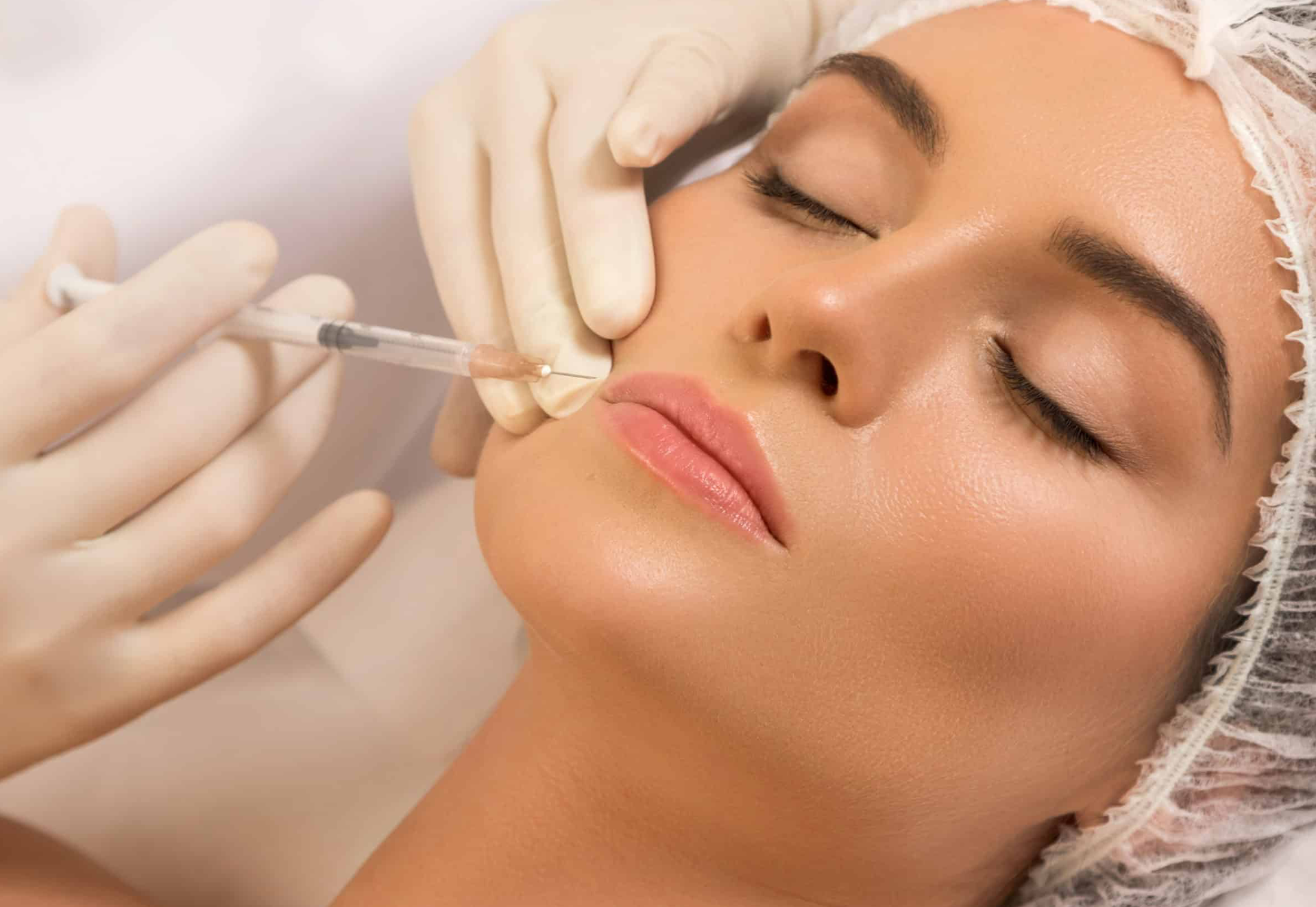
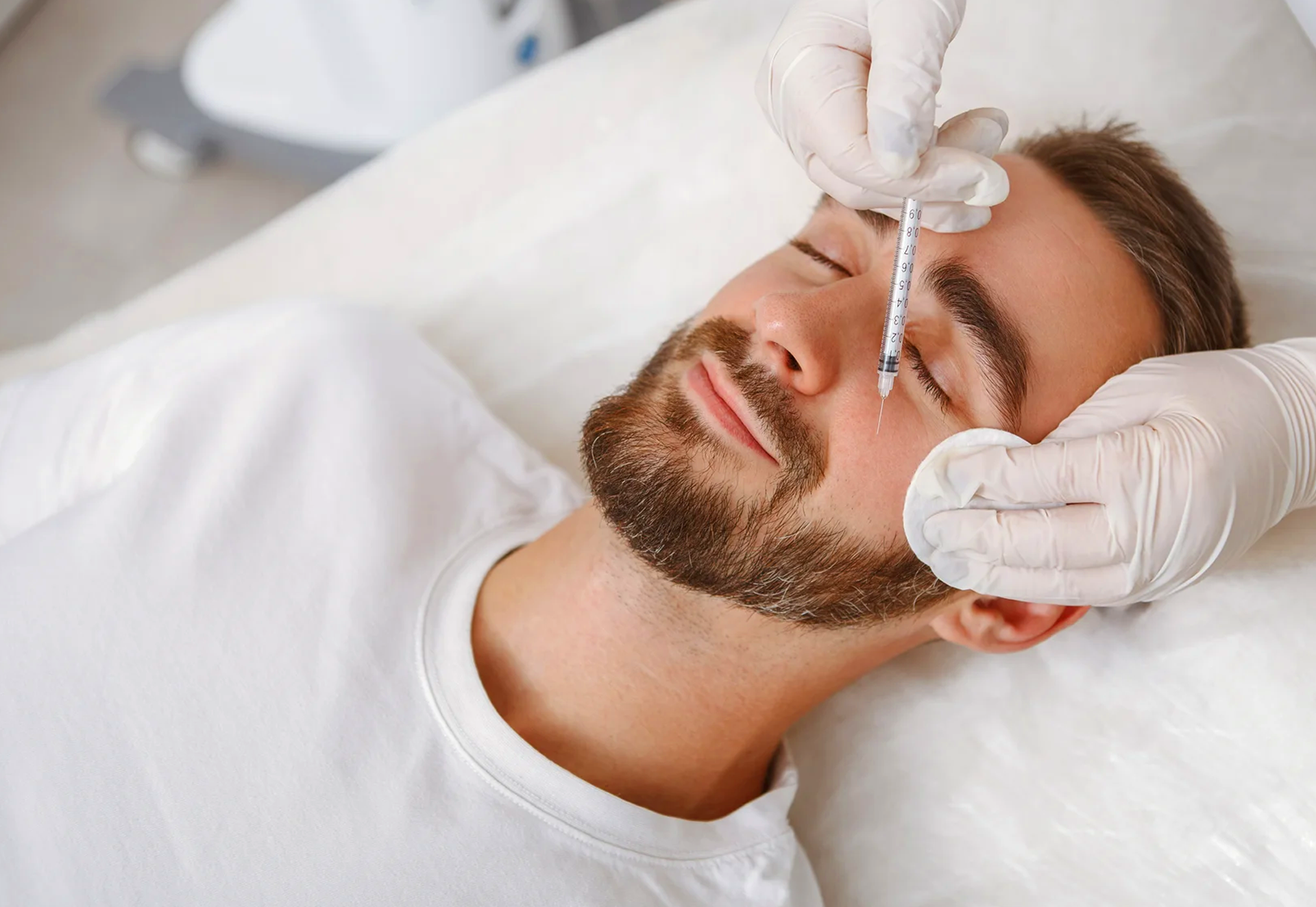
Injectable
Fillers
Dr. Omar treats depressions and hollows in the face and around the eyes with Injectable fillers. Hyaluronic Acid fillers such as Restylane, Restylane Lyft, Restylane Silk, Juvederm XC, Juvederm Ultra XC, Juvederm Voluma XC, Belotero and Perlane, are used by Dr. Omar to fill in wrinkles and improve facial contours.
Suspended in a gel, hyaluronic acid is naturally found in the body. It works by filling in areas that are depressed or need more volume. Many patients feel confused by all the choices of different fillers. Dr. Omar will review all the choices at your visit and choose the filler that is right for your needs and skin type. Briefly, the thicker gels work best to build volume in the cheeks and upper face. Less dense fillers work better for under eye hollows, fine wrinkles and for increasing lip volume.
What to
Expect
In the office, Dr Omar will assess your facial structure and suggest the filler, or combination of fillers for you. He will also listen to your concerns and then she will formulate a treatment plan. His aesthetic eye and gentle touch gives his patients a natural look without appearing “done” or “over filled.” The treatment usually takes about 15 minutes and then you will apply a cold compress for about 5 minutes after. Dr. Omar uses several injection techniques to get the filler exactly where it needs to be, reducing the chance of bruising and swelling. Normal activities can be resumed that day. Some patients request numbing cream which is available in the office.
Can Botox and Fillers be injected at the same visit?
Yes, Botox and facial fillers are compatible and are often used together to give an overall smooth and natural look to the face. In face, studies have shown that the results of HA fillers last longer when combined with a neurotoxin. The combination often gives a better result than one alone.
At what age should I start using injectables to best preserve a youthful look?
The answer is a personal decision. I see many patients in their late 20’s and early 30’s that start with Botox injections to prevent smile and frown lines from becoming ingrained in their face. I also see patients in their 50’s and beyond who are trying Botox and Fillers for the first time. Fillers are also variable. I see many young patients with under eye hollows and bags that they inherited from their mom or dad. These patients are excellent candidates for under eye filler. In my experience the transformation can be really amazing. I also see many people for the first time in their 40’s when they start to lose facial volume and want to restore their natural beauty.
I hate my under eye hollows and bags but I am not ready
ready for surgery
As an oculoplastic surgeon, I have a great expertise at treating cosmetic issues around the eyes. I treat many patients with fillers to the lower lid, who have hollows and/or bags who are not ready to have surgery. Under eye fillers are an excellent way to improve the appearance of the lower lids. In this area the filler typically lasts a year or longer.
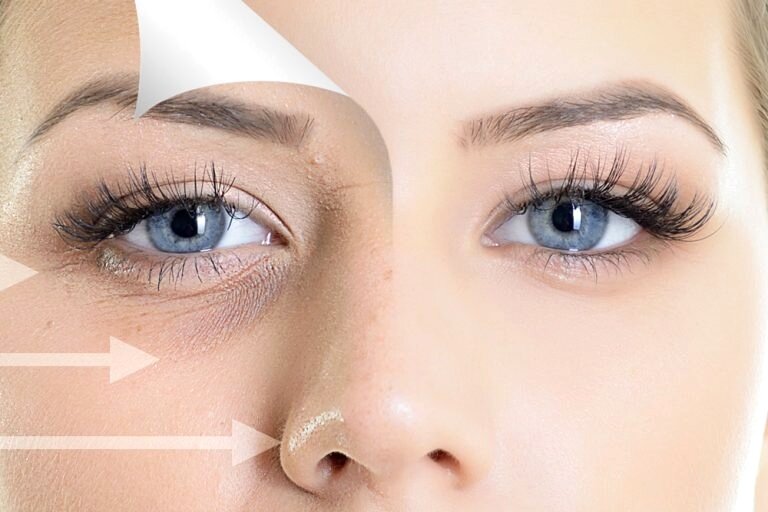
I hate the wrinkles
between my eyebrows
but I am scared to get Botox. I am afraid of putting an unknown substance in my body. And I don’t want my friends and work colleagues to know.
It is very common for patients to feel nervous about Botox treatments. I reassure all my patients that Botox is a time tested medication. It was first used in 1977 to treat lazy eyes in children and in 2002, Botox was approved by the FDA for cosmetic use in the face. When Botox is injected with proper technique, the face appears completely natural. So that no one will know that you were treated.
WHAT IS AN INTRAVITREAL
INJECTION?
An intravitreal injection is a procedure used to deliver medication into the vitreous cavity of your eye, which contains a gel-like substance. The medication delivered through the procedure treats specific eye conditions to correct your vision.
Eye injections are among the most effective treatments for a wide range of eye problems. We will choose the best quadrant of your eye for easy access during the injection. Local anesthesia is used to ease any discomfort during the procedure.
WHAT EYE CONDITIONS CAN AN INTRAVITREAL
INJECTION TREAT?
Intravitreal injection has emerged as the most effective way to deliver medication to the complex internal components of your eye. Eye diseases treated by intravitreal injections include:
Uveitis
Retinal vein occlusion
Neovascular age-related macular degeneration
Diabetic macular edema
Non-proliferative diabetic retinopathy
Proliferative diabetic retinopathy
Cystoid macular edema
Choroidal neovascular membrane
Retinal vein occlusions
Endophthalmitis
WHAT COMMON DRUGS DO DOCTORS USE FOR
INTRAVITREAL INJECTION?
We will use different drugs for intravitreal injection, based on your eye diagnosis. Common intravitreal injection treatments include:
Avastin eye injection. Avastin is a drug administered to block the growth of abnormal blood vessels in the back of your eye. Such vessels can leak and affect your vision.Age-related macular degeneration and diabetic cystoid oedema are the two most common diagnoses requiring Avastin injection.
Eylea eye injection. Eylea is also an FDA approved prescription medicine used to treat wet age-related macular degeneration, diabetic retinopathy and macular edema.
Dexamethasone intravitreal injection. Dexamethasone is one of the more common intravitreal eye injections. This steroid injection also helps treat swelling caused by blood vessel issues in your eye.
